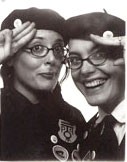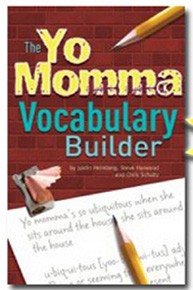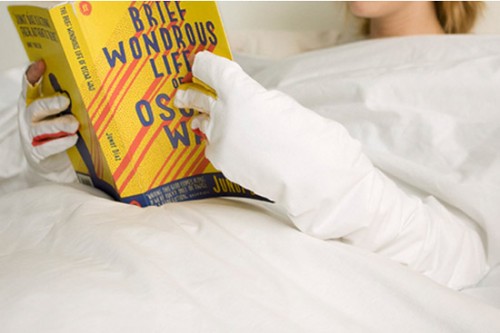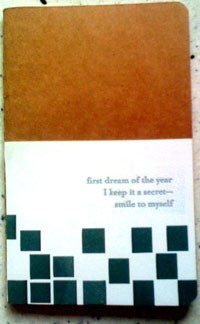 Nanette Wylde has a nice interview with Pod Post (Jennie Hinchcliff and Carolee Gilligan Wheeler) on her blog Whirligig. (Pod Post wrote the book Good Mail Day and sell merit badges for letterpress and the book arts.)
Nanette Wylde has a nice interview with Pod Post (Jennie Hinchcliff and Carolee Gilligan Wheeler) on her blog Whirligig. (Pod Post wrote the book Good Mail Day and sell merit badges for letterpress and the book arts.)
 Nanette Wylde has a nice interview with Pod Post (Jennie Hinchcliff and Carolee Gilligan Wheeler) on her blog Whirligig. (Pod Post wrote the book Good Mail Day and sell merit badges for letterpress and the book arts.)
Nanette Wylde has a nice interview with Pod Post (Jennie Hinchcliff and Carolee Gilligan Wheeler) on her blog Whirligig. (Pod Post wrote the book Good Mail Day and sell merit badges for letterpress and the book arts.)
 When we bought our place in Santa Fe, the selling realtor told us a vague story of a lawsuit concerning the development of the large piece of property next to ours. I was reminded of this the other day, and I spent a bit of time with Google trying to find out more information. I found the judgment quickly, but the legal jargon was awfully confounding. What’s a “protectable property interest?” All I came up with at first were more judgments and yet more lawyer-ese. By changing “protectable” to “protected” I think I was able to figure it out.
When we bought our place in Santa Fe, the selling realtor told us a vague story of a lawsuit concerning the development of the large piece of property next to ours. I was reminded of this the other day, and I spent a bit of time with Google trying to find out more information. I found the judgment quickly, but the legal jargon was awfully confounding. What’s a “protectable property interest?” All I came up with at first were more judgments and yet more lawyer-ese. By changing “protectable” to “protected” I think I was able to figure it out.
![]() As I told the story of the lawsuit and my frustration with the words to my husband over dinner, I asked aloud whether I just needed to work on my vocabulary. Last year I noticed that I used the generic word “funny” when I really wanted to use something more specific — like “ironic” or “absurd” or “clever” or “risible” or “odd” or … With what seems like a lot of concentration, I’m making some headway with that.
As I told the story of the lawsuit and my frustration with the words to my husband over dinner, I asked aloud whether I just needed to work on my vocabulary. Last year I noticed that I used the generic word “funny” when I really wanted to use something more specific — like “ironic” or “absurd” or “clever” or “risible” or “odd” or … With what seems like a lot of concentration, I’m making some headway with that.
![]() Then, on Sunday, in the On Language column of the NY Times Sunday Magazine, Ammon Shea writes about whether worrying about one’s vocabulary size is worth the trouble. He says
Then, on Sunday, in the On Language column of the NY Times Sunday Magazine, Ammon Shea writes about whether worrying about one’s vocabulary size is worth the trouble. He says
There are thousands of books and Web sites, many of them quite commercially successful, that promise to help redress the problem. The cover of the audio book Wordmaster exhorts you to “Improve your word power and improve your life!” The Web site Verbalsuccess.com avers that its method will earn you greater respect in life and allow you to make more money after using it for just a week. Others make promises of a more modest nature, like the cautious claim in the book The Words You Should Know to Sound Smart that it is “possible” that learning its words “may even put some money in your pocket.”
But I loved the title of another book he mentions, The Yo Momma Vocabulary Builder. Shea ends his essay with this thought, which made me remember why I loved words in the first place:
the contemporary book that gives perhaps the most romantic explanation for why you should learn words is The Yo Momma Vocabulary Builder, which says that the “primary reason to seek a larger vocabulary has nothing to do with impressing people, cultivating professional gain or building scholarly achievement.” The reason the authors of this curious book give for learning new words? “It makes life more interesting.”
Read Shea’s entire essay here.
 The button to the right comes from a website that says
The button to the right comes from a website that says
We support the printed word in all its forms: newspapers, magazines, and of course books. We think reading on computers or phones or whatever is fine, but it cannot replace the experience of reading words printed on paper. We pledge to continue reading the printed word in the digital era and beyond.
You’re probably seen on TV or in the drug-store the Snuggie, a blanket with sleeves (that looks more like a bathrobe worn backwards) that purports to keep you warm while watching TV or reading on the couch. The blanket with built-in gloves below keeps your arms and hands warm while reading in bed. Notice that the top of the index finger is cut out, to make it easier to turn the pages. My solution is to wear arm warmers, which do double duty, as I can wear them during the day under my coat… Found here and available here.

I’ve been looking around for inspiration for collage-making. Twenty years ago, the Victoria and Albert Museum in London put out a series of four books with a curated sampling from their collection of pattern designs. Each book in the set has 65 patterns from diverse holdings such as wallpapers, designs and textiles and grouped around a different theme. Last October they reissued the books with a bonus: each volume — The Fifties, Digital Pioneers, William Morris, and Indian Florals — comes with a CD of all the images from the book tucked into the back cover. Soon they are releasing a second set with the titles Novelty Patterns, Owen Jones, Secret Garden, and Kimono.
The boxed set is currently sold out, but I’m going to order The Fifties, see sample images below.
 I brought what I think of as a “craft box” with me to New Mexico — paper, small cutting mat, ruler, my tool rool up. My hope is that I’ll make collages in the evenings while we get the house ready during the day to move my shop. So far I’ve been overwhelmed with house projects, figuring out where to shop for groceries, and just generally getting my bearings.
I brought what I think of as a “craft box” with me to New Mexico — paper, small cutting mat, ruler, my tool rool up. My hope is that I’ll make collages in the evenings while we get the house ready during the day to move my shop. So far I’ve been overwhelmed with house projects, figuring out where to shop for groceries, and just generally getting my bearings.
![]() Then last Friday I looked up the Santa Fe Book Arts Group on the web, and was happy to see that they had their monthly meeting the next day! They were starting a “journal project” that day — much like the 1000 Journals exhibit I wrote about here, except the journals would be rotated among the members rather than left for just anyone to write in. I didn’t have time to get to an art store before the meeting to buy a pre-made book, but remembered my “craft box” had several blank moleskines, including the one to the left, with a haiku from one of my calendars pasted on the front.
Then last Friday I looked up the Santa Fe Book Arts Group on the web, and was happy to see that they had their monthly meeting the next day! They were starting a “journal project” that day — much like the 1000 Journals exhibit I wrote about here, except the journals would be rotated among the members rather than left for just anyone to write in. I didn’t have time to get to an art store before the meeting to buy a pre-made book, but remembered my “craft box” had several blank moleskines, including the one to the left, with a haiku from one of my calendars pasted on the front.
![]() Off I went to the meeting. It was quite a large group — I counted over 60 people! Those participating in the journal project were divided into groups of 8 or so. Every 15 days I’m supposed to receive a journal in the mail. The journal owner might have specified a theme for the book (or not), and I am to fill in as many pages as I wish. After 15 days, I send the journal on to the next person on the list, and repeat with the next journal I receive in the mail. I’ve got my first journal already — and the theme is “spangled.” As we’re all just getting organized and some people didn’t have journals finished yet, I have until March 15th to finish my first entry.
Off I went to the meeting. It was quite a large group — I counted over 60 people! Those participating in the journal project were divided into groups of 8 or so. Every 15 days I’m supposed to receive a journal in the mail. The journal owner might have specified a theme for the book (or not), and I am to fill in as many pages as I wish. After 15 days, I send the journal on to the next person on the list, and repeat with the next journal I receive in the mail. I’ve got my first journal already — and the theme is “spangled.” As we’re all just getting organized and some people didn’t have journals finished yet, I have until March 15th to finish my first entry.
![]() This is just what I need to nudge me into making those collages!
This is just what I need to nudge me into making those collages!